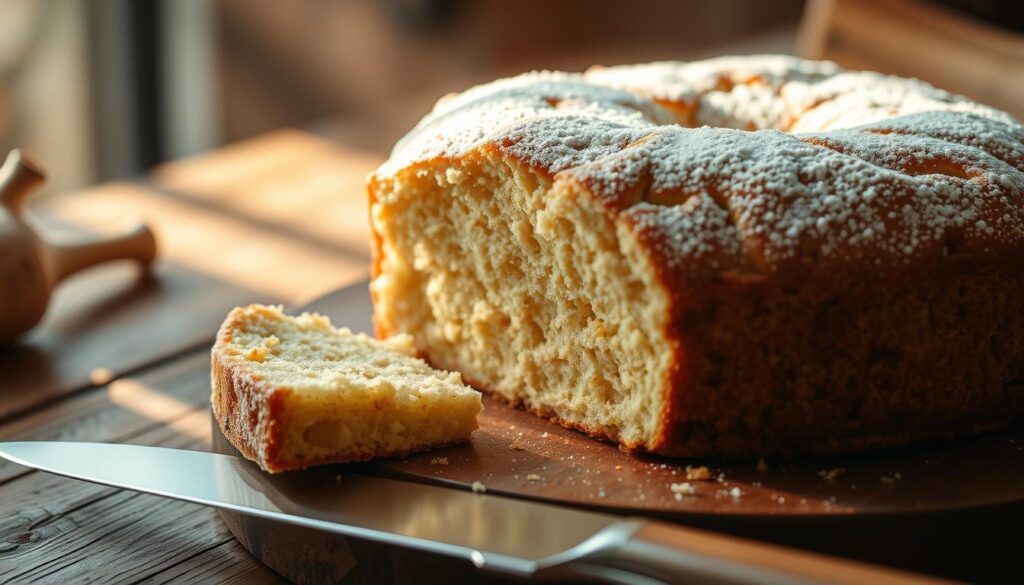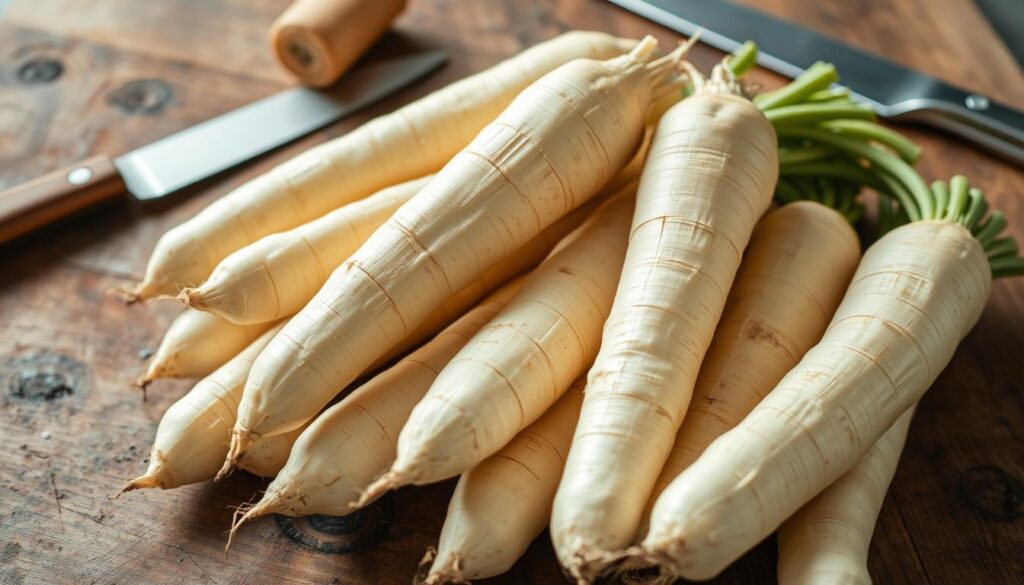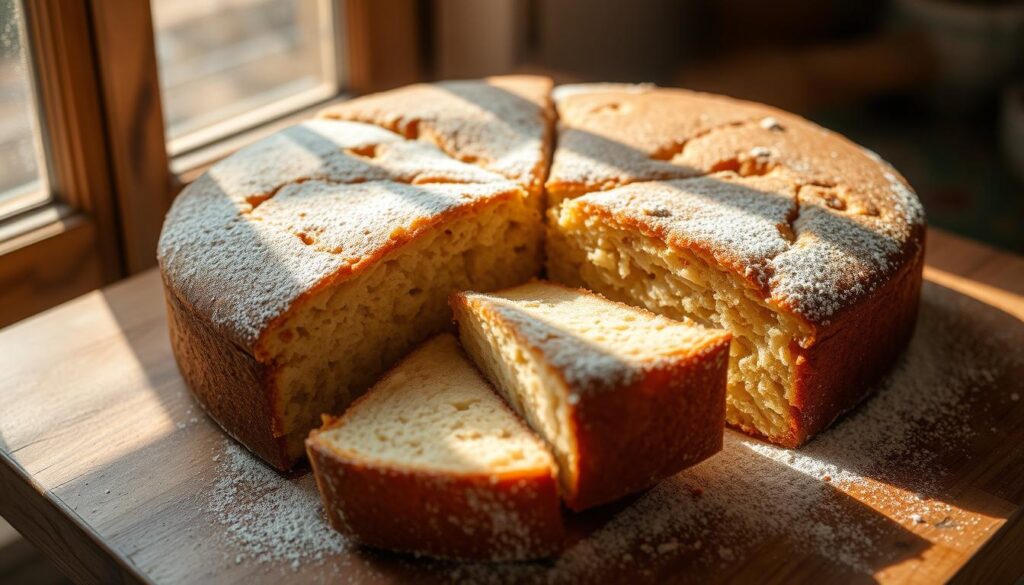Discover the delightful alternative to traditional carrot cake with our expertly crafted parsnip cake recipe. We have thoroughly tested this recipe to bring out the natural sweetness and earthy complexity of parsnips, creating a moist and flavorful dessert.
Unlike its more famous cousin, this cake offers a unique flavor profile with subtle nutty notes that pair beautifully with warm spices and a hint of cream cheese frosting. Our comprehensive guide shares expert insights on ingredient selection, preparation techniques, and serving suggestions to help you achieve perfection in your baking endeavors.
Key Takeaways
- Unique flavor profile of parsnip cake
- Thoroughly tested recipe for consistent results
- Expert insights on ingredient selection and preparation
- Balancing sweetness with natural flavors
- Sophisticated dessert appealing to both adventurous and traditional bakers
Discovering the Charm of Parsnip Cake
We’re excited to share with you the allure of parsnip cake, a dessert that embodies the warmth and comfort of fall and winter. This cake is not just a variation of the classic carrot cake, but a sophisticated evolution that brings a unique flavor profile to the table.

What Makes Parsnip Cake Special
Parsnip cake represents a culinary discovery that impresses with its unique character and subtle complexity. The humble parsnip brings unexpected depth to baked goods, creating a cake that’s both familiar and intriguingly different. Some key aspects that make parsnip cake special include:
- A complex flavor profile that combines natural sweetness with earthy, nutty undertones.
- The natural sugars in parsnips caramelize beautifully during baking, creating rich flavor notes.
The Flavor Profile: Earthy Sweetness
The flavor profile of parsnip cake is characterized by its earthy sweetness, a trait that distinguishes it from the more straightforward sweetness of carrot cake. This cake offers a nuanced taste experience with hints of spice and nuttiness. The cream cheese frosting complements the cake’s natural sweetness perfectly, creating a balanced dessert. Key elements of this flavor profile include:
- Earthy sweetness from the parsnips.
- Hints of spice and nuttiness that develop as you enjoy each bite.
- A perfect balance with cream cheese frosting.
All About Parsnips for Baking
The key to a delicious parsnip cake lies in selecting and preparing the parsnips correctly. We recommend choosing firm, evenly colored parsnips that aren’t too large, as these will have a sweeter flavor and better texture for baking.
Selecting the Best Parsnips
When selecting parsnips, look for medium-sized roots with even coloration. Avoid any that are limp, shriveled, or show signs of decay. Winter parsnips are particularly good for baking as colder temperatures convert some of their starches to sugars, creating a sweeter flavor profile.
Preparing Parsnips for Your Cake
To prepare parsnips, peel them thoroughly and trim the ends. For larger parsnips, consider removing the woody core to ensure a consistent texture. Grate the parsnips finely using a box grater or a food processor with a grating attachment to ensure they bake evenly and blend into the batter seamlessly.
Parsnips vs. Carrots in Baking
While both parsnips and carrots can be used in baking, parsnips have a more pronounced flavor that intensifies when baked. They also have a slightly different moisture content compared to carrots, which may affect the cake’s texture. Our recipe takes these differences into account to ensure a perfectly moist result.
| Characteristics | Parsnips | Carrots |
|---|---|---|
| Flavor Profile | Sweet, earthy, intensifies when baked | Sweet, but milder than parsnips |
| Texture | Firmer, can be woody if not prepared correctly | Generally softer and more uniform |
| Moisture Content | Slightly different from carrots, affects cake texture | Higher moisture content |

Perfect Parsnip Cake Recipe
The perfect parsnip cake recipe is a culmination of our exploration into the world of parsnips and baking. This recipe brings together the best elements of parsnip selection, preparation, and baking techniques to create a truly exceptional cake.
Ingredients You’ll Need
To make our parsnip cake, you’ll need to gather several key ingredients. The cake base requires 1 1/2 cups of all-purpose flour, 1 cup of sugar, and 2 teaspoons of baking powder, among other dry ingredients. For the cream cheese frosting, you’ll need 4 ounces of cream cheese and 2 tablespoons of butter.
For the Cake
- 1 1/2 cups all-purpose flour
- 1 cup sugar
- 2 teaspoons baking powder
- 3/4 teaspoon salt
- 3 large eggs
- 1/2 cup oil
- 1/2 cup milk
- 1 teaspoon vanilla extract
- 2 cups shredded parsnips
- 1/2 cup chopped nuts
For the Cream Cheese Frosting
- 4 ounces cream cheese
- 2 tablespoons butter
- Vanilla extract
- Powdered sugar
| Ingredient | Quantity | Purpose |
|---|---|---|
| All-purpose flour | 1 1/2 cups | Provides structure |
| Sugar | 1 cup | Adds sweetness |
| Cream cheese | 4 ounces | Base for frosting |
| Parsnips | 2 cups shredded | Adds moisture and flavor |
Step-by-Step Baking Instructions
Preheat your oven to 350°F. Whisk together the dry ingredients, then combine the wet ingredients separately. Mix the wet and dry ingredients together until just combined, being careful not to overmix the batter. Fold in the shredded parsnips and chopped nuts.
Preparing the Batter
When preparing the batter, it’s crucial to whisk the dry ingredients separately from the wet ingredients before gently combining them. This helps prevent overmixing, which can result in a tough cake.
Baking and Cooling
Bake the cake for about 25 minutes, or until a toothpick inserted into the center comes out clean. Allow the cake to cool completely on a wire rack before frosting.
Frosting Your Cake
For the cream cheese frosting, beat the cream cheese and butter together until light and airy. Gradually incorporate the powdered sugar, adjusting the consistency as needed.

Expert Tips for Parsnip Cake Success
Achieving parsnip cake perfection requires more than just a great recipe; it demands attention to detail and a few expert techniques. To help you create a truly exceptional cake, we’ve compiled our top tips covering preparation, baking, and frosting.
Grating Techniques for Perfect Texture
The texture of your parsnip cake largely depends on how you grate the parsnips. We recommend using the fine side of a box grater or a food processor with the grating attachment for consistent, small pieces that will cook evenly. Grating finely ensures that the parsnips bake fully into the cake, avoiding any unwanted crunchiness. This technique is crucial for achieving a tender and smooth cake texture.
Spice Combinations to Enhance Flavor
The right spice blend can elevate the natural flavor of parsnips, creating a deliciously complex taste experience. A combination of cinnamon, ginger, nutmeg, and cardamom provides a perfect balance that enhances the parsnip’s flavor without overwhelming it. Experimenting with different spice levels allows you to tailor the flavor to your liking.
Common Mistakes to Avoid
One of the most common mistakes in baking a parsnip cake is underbaking, which can result in a cake that’s not fully cooked. Ensure your cake is thoroughly baked by checking for doneness with a toothpick; it should come out clean. Additionally, avoid overmixing the batter, as this can lead to a tough cake. For the cream cheese frosting, make sure your ingredients are at room temperature to achieve a smooth and spreadable consistency.
Serving and Storing Your Parsnip Cake
Now that you’ve mastered the art of baking parsnip cake, let’s explore how to serve and store it. We recommend making your parsnip cake up to 24 hours in advance, allowing you to focus on other aspects of your gathering.
For the best flavor, allow your cake to come to room temperature before serving, especially if it’s been refrigerated. This simple step enhances the subtle flavor notes, making your cake even more enjoyable.
When it comes to storage, you can keep your parsnip cake covered at room temperature for up to three days. If your kitchen is warm, consider refrigerating it to preserve the cream cheese frosting. For longer storage, you can freeze the unfrosted cake for up to three months.
To elevate your dessert experience, consider pairing your parsnip cake with complementary accompaniments like toasted walnuts or a dollop of lightly spiced whipped cream.


